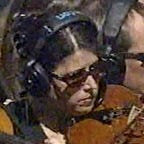Theology of Lyfe
post #3
Over the course of our time together our group has become aware of the challenges of integrating our individual theologies with The Body Keeps the Score. Given the diversity of own texts and the lenses through which we interpret them, the context of class discussion and collaborative paper writing felt limiting to our ability to interact creatively with each other and our material. When it came time to locate how our theologies intersect through our video presentation, the same restraint surfaced and our collaborative imagination recoiled at the potential risk ahead. However, when we gathered around food and drinks at the home of a group member, everything began to shift. The freedom to be ourselves and engage each other in a new way enabled us to be found at the intersection of all our theologies through play.
A theology of “play” was not something that we discussed as a group over the course of our work together. And yet as we gathered together to formulate a major takeaway from this assignment, a theology of “play” emerged as an integrative link between our various theologies. In attempting to integrate theologies in a mixed gender group of individuals from different ethnic/cultural backgrounds, we found that each of our own past traumatic experiences in spiritual communities inhibited our freedom to imagine what a collective theology might look like. We felt stirred and inspired by each other’s theological musings as we shared in our group time, but efforts to integrate our theologies felt stunted and awkward at times. What broke through this wall for us was the time we spent playing with Legos for seven plus hours. Something about the childlike activity of building and voicing characters together freed our minds and allowed us to feel safe enough together to collaborate. The threat of fumbling around and making a wrong move abated, and we were able to come to some conclusions about our theology and traumatology together.
What is often reiterated here at The Seattle School is that we are found and healed within community, as though we truly are “the hands and feet” of the Creator/Healer to each other. We found that as we vulnerably brought our subjective, differing experiences and new ways of thinking and interpreting the text to one another, we ultimately were “finding” one another, despite our ethnic/cultural/gender differences, in the shared space of play, giving us access to imagine together.
Van der Kolk (2014) claims that imagination and fantasy give us access to hope, creativity, and deeper relationships. Imagination suspends normal sensibilities of what is and allows us to be taken up into what might be. In blurring the lines between reality and fantasy we allow something within and around us to come into being — formless parts of us are given space to take shape into our conscious minds. When we do this together, whether as playmates, friends, or lovers, these unfolding parts of us interact and converse like characters on a stage. The story told is at the same time both familiar and foreign — much in the same way we are both familiar and foreign to ourselves and each other. What we know, both of ourselves and of others, is challenged and expanded as we encounter the vantage point of another imagination. And it is in this tension between reality and fantasy, familiarity and strangeness, that human intimacy is born — at the intersection of our colliding imaginations.
To conclude, we would like to leave you with this poem, created from our experience of moving from trauma to imagining differently together:
We are aware of this garment of skin that holds our suffering and pain. Of the intersection between our bodies and the land — this mystery of being found in the brokenness of our bodies, amidst the brokenness of the land. When we are found, we no longer believe that we broke the rules, but realize instead that our faces were turned away from life. She was not just found to be there, she was found there in her brokenness. She was met and not given all of the answers, but was ushered into healing.
Thank you,
Theology of Lyfe
